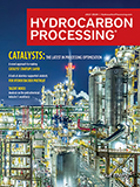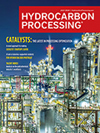U.S. high-octane gasoline demand may drop if fuel efficiency rules change
NEW YORK, (Reuters) - U.S. demand for high octane gasoline could decline if the Environmental Protection Agency (EPA) changes fuel efficiency rules established under the Obama administration, analysts said.
The rules, negotiated with automakers in 2011, sought to double average fleet-wide fuel efficiency to about 50 miles (80 km) per gallon by 2025.
The EPA plans to declare by April 1 that the rules are "not appropriate," thereby allowing the Trump administration to reopen vehicle emissions rules, two officials briefed on the matter said on Friday.
Changes to the fuel efficiency rules could lead to more gasoline usage, said Andrew Linhardt, deputy legislative director for transportation with the Sierra Club in Washington.
"More gasoline usage means more CO2, more pollutants in the air, dirtier air, and causing more climate change," Linhardt said.
In recent years automakers have manufactured more models that operate better with premium gasoline, said Sandy Fielden, director of oil and products research at Morningstar Commodities in Austin, Texas.
Premium gasoline, which has higher levels of octane, extends the mileage for a gallon of gas, thereby making it more efficient. The increased use of premium gasoline has raised octane demand, said Patrick DeHaan, head of petroleum analysis at GasBuddy in Chicago.
Sales of premium gasoline as a percentage of total motor gasoline have steadily risen since 2011, data from the U.S. Energy Information Administration showed.
In 2011, premium gasoline sales were 8.97 percent of total motor gasoline sales by U.S. prime suppliers, the data showed. In 2016, the most recent annual data available, premium gasoline's market share increased to 11.52 percent.
The RBOB futures contract on the New York Mercantile Exchange gained $0.0005 to $2.014 a gallon by 2:10 p.m. EDT (1810 GMT)
Premium gasoline for physical delivery on the Gulf Coast traded at 6 cents a gallon above the futures contract on NYMEX, traders said. By comparison, M2 conventional gasoline <RU-DIFF-USG> traded 10.50 cents below the futures benchmark.
If the EPA were to ease fuel efficiency rules, manufacturers could reduce production of vehicles with higher-performance engines, Fielden said.
"That would increase the amount of regular gasoline versus premium and that would have a negative or neutral effect on this increase in the octane demand in the market," Fielden said.
(Reporting by Stephanie Kelly Editing by Toni Reinhold)







Comments